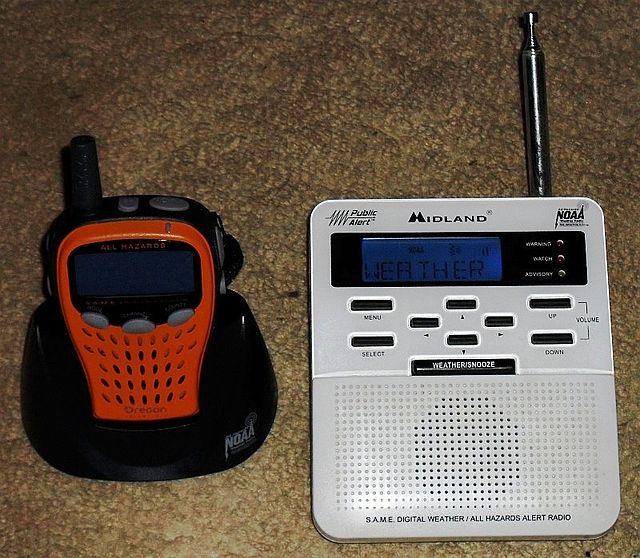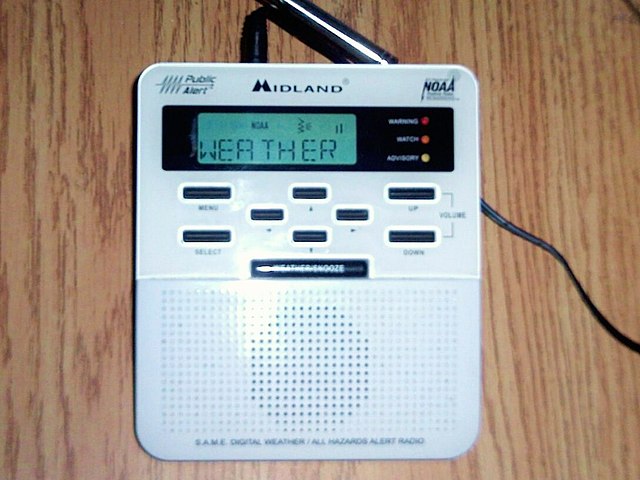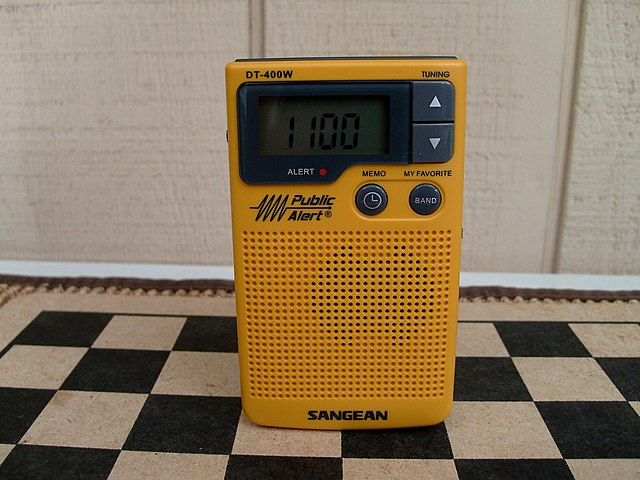NOAA Weather Radio (NWR), also known as NOAA Weather Radio All Hazards, is an automated 24-hour network of VHF FM weather radio stations in the United States that broadcast weather information directly from a nearby National Weather Service office. The routine programming cycle includes local or regional weather forecasts, synopsis, climate summaries or zone/lake/coastal waters forecasts. During severe conditions the cycle is shortened into: hazardous weather outlooks, short-term forecasts, special weather statements or tropical weather summaries. It occasionally broadcasts other non-weather related events such as national security statements, natural disaster information, environmental and public safety statements, civil emergencies, fires, evacuation orders, and other hazards sourced from the Federal Communications Commission's (FCC) Emergency Alert System. NOAA Weather Radio uses automated broadcast technology that allows for the recycling of segments featured in one broadcast cycle into another and more regular updating of segments to each of the transmitters. It also speeds up the warning transmitting process.

A picture of the NOAA WR-120 EZ Weather Radio.
Public service announcement featuring comic strip character Mark Trail promoting NOAA Weather Radio
Image: SAMEWX Radio
Image: Sangean DT 400W (10711375244)
A weather radio is a specialized radio receiver that is designed to receive a public broadcast service, typically from government-owned radio stations, dedicated to broadcasting weather forecasts and reports on a continual basis, with the routine weather reports being interrupted by emergency weather reports whenever needed. Weather radios are typically equipped with a standby alerting function—if the radio is muted or tuned to another band and a severe weather bulletin is transmitted, it can automatically sound an alarm and/or switch to a pre-tuned weather channel for emergency weather information. Weather radio services may also occasionally broadcast non-weather-related emergency information, such as in the event of a natural disaster, a child abduction alert, or a terrorist attack.

Two types of weather radio receivers; the common Midland home weather radio (model WR-100) to the right is often the most popular and known unit sold in the United States, while the orange Oregon Scientific model on the left is portable and water-resistant for outdoor use.
Sangean DT-400W (10711303835)
Wib2bx







